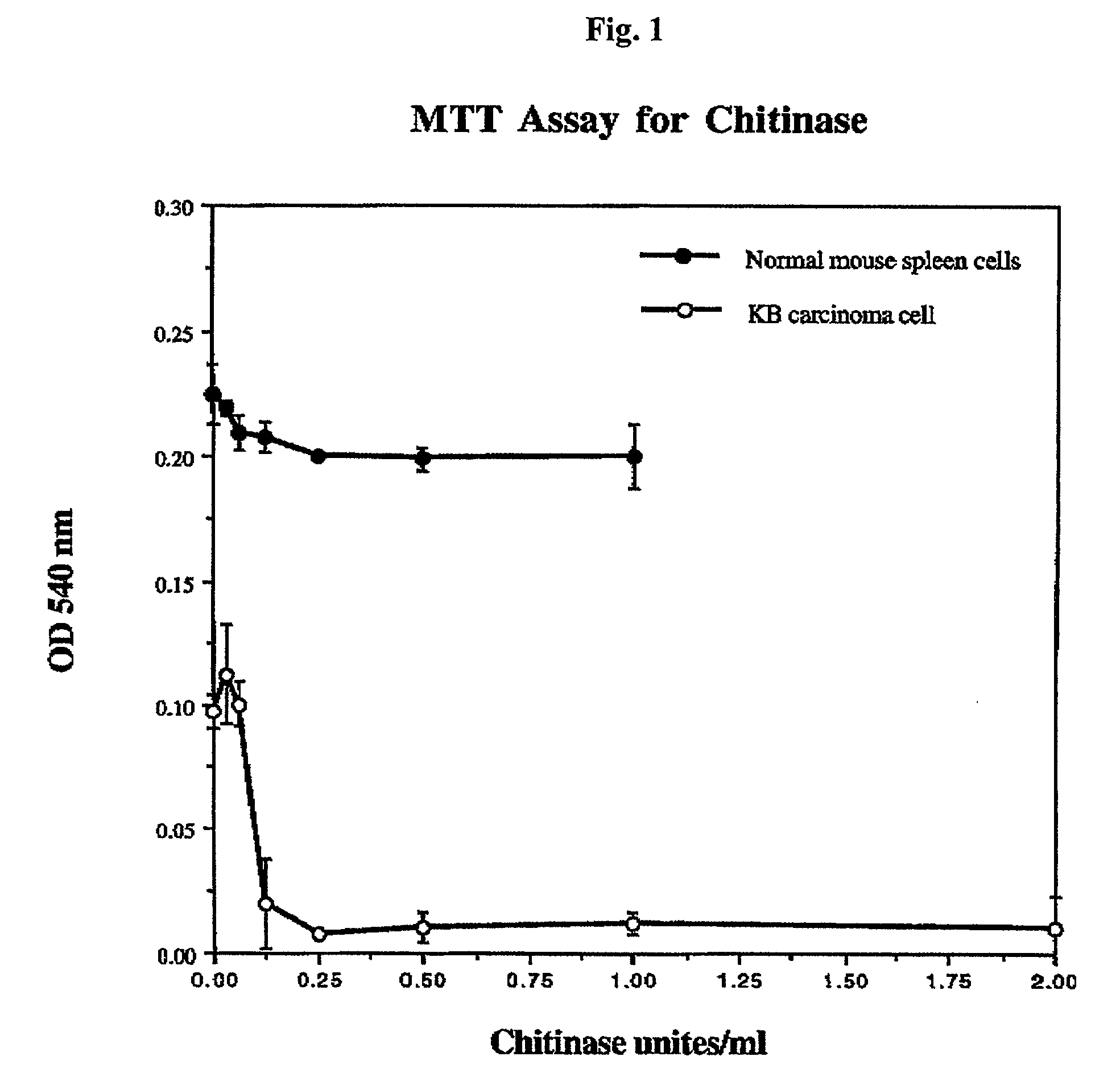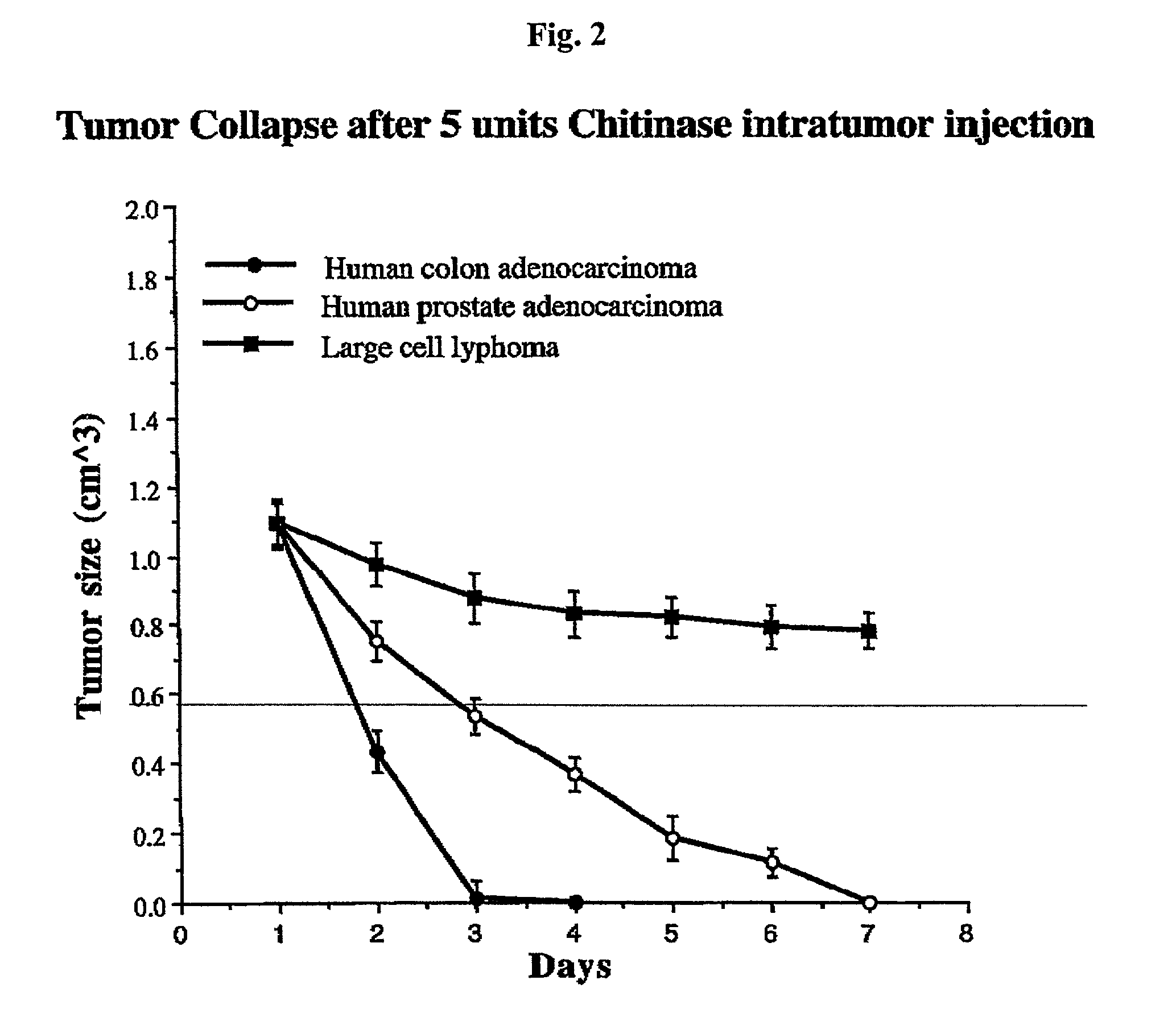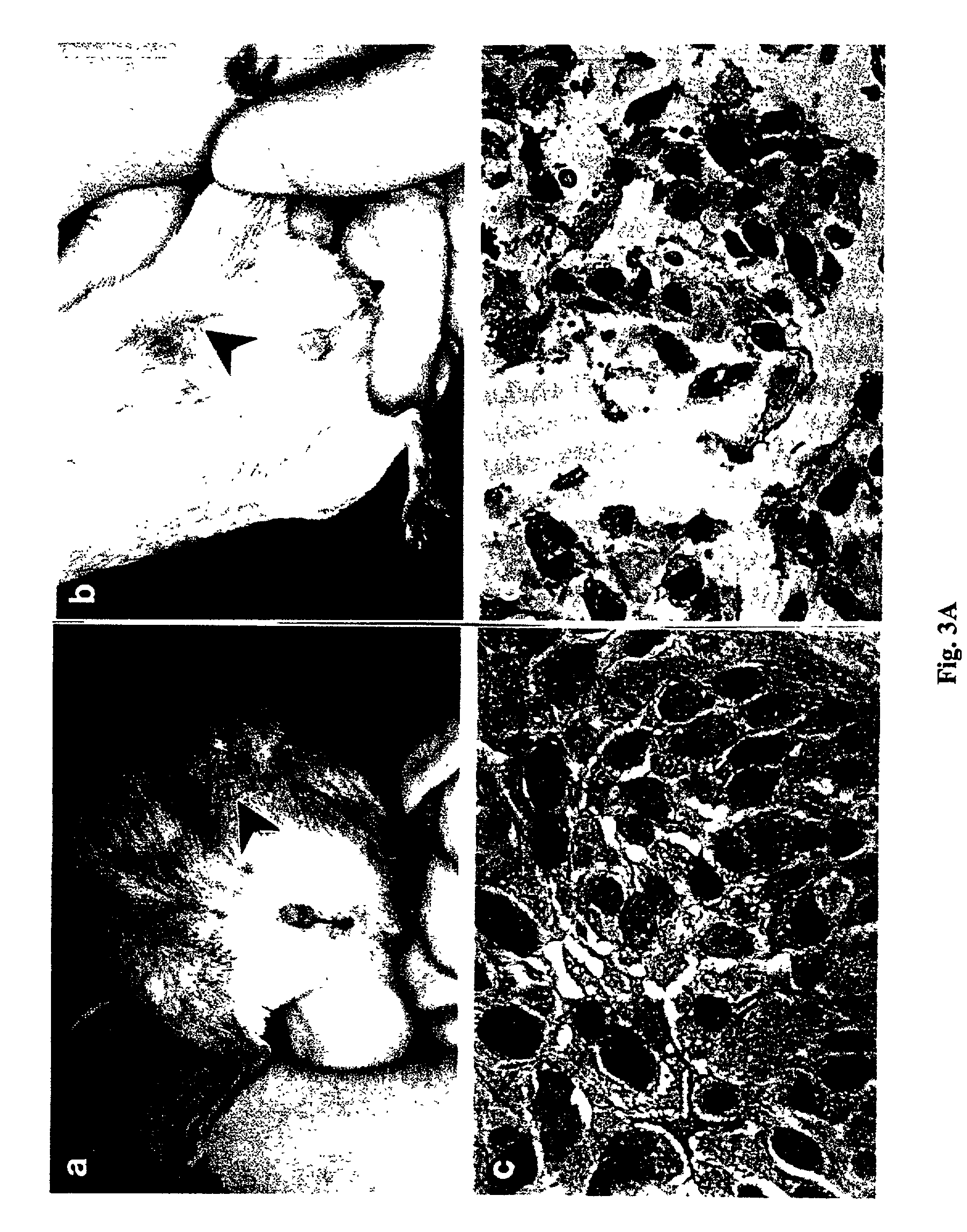Enzyme-based anti-cancer compositions and methods
a technology of compositions and enzymes, applied in the field of enzyme-based anticancer compositions and methods, can solve the problems of inconclusive data generated so far, limited demonstrable effectiveness of response modifiers such as tumor necrosis factors, interferon and interleukin-2, and agents that exhibit dose-limiting toxicity
- Summary
- Abstract
- Description
- Claims
- Application Information
AI Technical Summary
Problems solved by technology
Method used
Image
Examples
example 1
Survival of Cultured Normal and Tumor Cells in Media Containing Chitinase
[0069] Fifty thousand spleen cells from a normal mouse, or human oral carcinoma KB cells were cultured. Chitinase (from Streptomyces griseus) was dissolved in PBS and added to the cells at the indicated concentrations shown in FIG. 1 and the cells were cultured at 37.degree. C. Three days later, MTT (3-(4,5-dimethylthiazol-2-yl)-2,5-diphenyltetraz-olium bromide) dye reduction assays were performed to determine the viability of the cells in the presence of the chitinase. MTT is a chemical compound, which is converted to a blue formazan product in living cells. This product was dissolved in a solvent (95% ethanol:DMSO; 1:1), added to the cells and the absorbance (540 nm) was determined. The absorbance of the formazan is linearly proportional to the number of viable cells in the culture. The data in FIG. 1 show that chitinase efficiently kills the tumor cells (KB carcinoma cells) at concentrations of between 0.025...
example 2
Survival of SCID Mice Carrying Human Colon Cancer Xenografts After Chitinase Injection
[0071] Moderately differentiated adenocarcinoma from human colon was obtained from patients as a biopsy sample and a 0.1 cm.sup.3 piece of the biopsy was implanted into SCID mice. After the tumors grew to a size of between 0.3-0.6 cm.sup.3, 5 units of chitinase was injected into the tumor (day 1). Subsequently, the size of the tumors was measured daily. The results (FIG. 2) showed that human colon cancer was effectively eliminated from the animals by the chitinase over a period of 2 days.
example 3
Survival of SCID Mice Carrying Human Lung Cancer Xenografts After Chitinase Injection
[0072] Moderately differentiated squamous cell carcinoma from human lung was obtained from patients as a biopsy sample and a 0.1 cm.sup.3 piece of the biopsy was implanted into SCID mice. After the tumors grew to a size of between 0.3-0.6 cm.sup.3, 5 units of chitinase was injected into the tumor (day 1). Subsequently, the size of the tumors was measured daily. The results showed that the lung tumors were as effectively eliminated from the mouse by chitinase as was the human colon cancer as described in Example 2.
[0073] FIG. 3 shows photographs of SCID mice containing a human lung tumor xenograft before and after injection of the tumor with chitinase as above. In FIG. 3a, the tumor before chitinase treatment is indicated by the arrow. FIG. 3b shows the tumor in the same mouse 10 days after a single injection of 5 units of chitinase. The tumor was substantially reduced in size after the chitinase tre...
PUM
 Login to View More
Login to View More Abstract
Description
Claims
Application Information
 Login to View More
Login to View More - R&D
- Intellectual Property
- Life Sciences
- Materials
- Tech Scout
- Unparalleled Data Quality
- Higher Quality Content
- 60% Fewer Hallucinations
Browse by: Latest US Patents, China's latest patents, Technical Efficacy Thesaurus, Application Domain, Technology Topic, Popular Technical Reports.
© 2025 PatSnap. All rights reserved.Legal|Privacy policy|Modern Slavery Act Transparency Statement|Sitemap|About US| Contact US: help@patsnap.com



